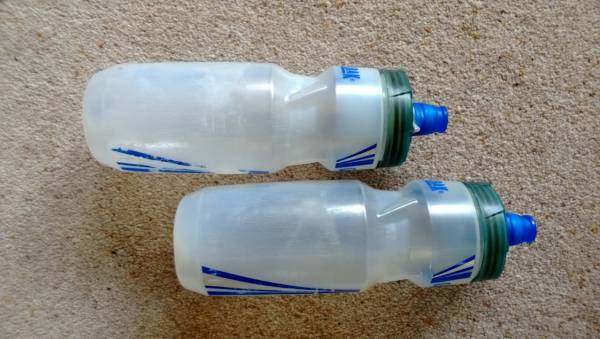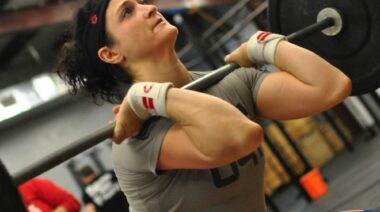We have been having some really hot weather recently in the United Kingdom. The heat generated some discussion amongst members at my local cycling club about what one should do whilst out riding or competing in an event. Fortunately, hydration – or rather the lack of it – has been studied at some depth.
Hydration, Energy, and Performance
The usual guidelines given to instructors and coaches are that a person should drink approximately two liters of water per day. Exercise and heat increase the demand for fluids. As the body works harder, more heat is created, which needs to be lost. Approximately 75% of the energy used in exercise produces heat, with the remaining 25% going to useful work. The heat loss occurs when we perspire and also when we exhale. Although it is common to think of dehydration in the context of heat and exercise, if the environment is arid then significant fluid loss can also occur through the skin and exhaled breath.
Proper functioning of the body relies on numerous chemical reactions to take place while the materials reacting are transported and suspended in solution. A reduction in the amount of water available to the body starts to affect the concentrations of these solutions quite quickly and this in turn can affect the rates of the various reactions that occur. These include the generation of energy and the removal of waste.
A reduction of just 2% of fluid can result in degraded performance by as much as 10-20%. This is a significant amount. Consider for a moment the amount of effort that goes into training to improve by just 5%. All that, and more, can be lost by inadequate hydration.
Water is also used to cool the body through perspiration. A lack of water reduces perspiration and leads to fatigue. As fluid is reduced, the body is less able to perspire and so internal heat rises further. If this cycle is not corrected, overheating and in the worst cases hyperthermia can occur.
How Much to Drink
A general rule of thumb is to consume 500ml per hour of vigorous exercise in addition to the two liters per day. In practice, the need varies from person to person and the best thing to do is to measure yourself. This is quite easy to do with a simple test. One liter of water weighs one kilogram. By measuring your weight before and after training or a test event and correcting for any fluids taken in, you will get an individual rate of fluid lost for those conditions.
For example, a 70kg athlete who loses 200 grams during a one hour training session whilst drinking a 500ml drink will have a gross loss of:
(Finish weight – start weight) – (weight of amount drink)
or
69.8 – 70.0 – 0.5 = -0.7kg or -700g
This gross loss is equivalent to 700mL of fluid per hour. This figure would help the athlete plan fluid needs during an event. A further adjustment would be needed if the conditions of the test training were different to the event. A 70kg 2:30 marathon runner can lose as much as 5L (5kg) of body fluid in that time!
Dealing With Hyperthermia and Dehydration
 Heat exhaustion occurs when fluid intake does not compensate for perspiration loss. Symptoms can include cool and clammy skin, weak pulse, nausea, dizziness, weakness, and anxiety. If left unattended this may progress to heat stroke when the body’s temperature control system fails. Heat stroke is a life threatening condition and should be treated as a medical emergency. Avoidance is the best course of action by taking appropriate precautions.
Heat exhaustion occurs when fluid intake does not compensate for perspiration loss. Symptoms can include cool and clammy skin, weak pulse, nausea, dizziness, weakness, and anxiety. If left unattended this may progress to heat stroke when the body’s temperature control system fails. Heat stroke is a life threatening condition and should be treated as a medical emergency. Avoidance is the best course of action by taking appropriate precautions.
This means drinking fluids, but there’s more to it than that – drinks are absorbed by the body at different rates depending up on their concentrations. Osmolality is a measure that compares the concentration of the drink with the concentration of the body. Osmosis is a process where water will move from a more concentred solution to a lower concentrated solution across a boundary.
- Hypotonic: Has a concentration that is lower than the body and will be absorbed quickly. This is a good mixture when fluid loss is likely to occur at a high rate.
- Hypertonic: Has a concentration higher than the body. This is slower to digest and a very concentred solution may result in water being drawn out from the body. This is undesirable in situations where we are trying to rehydrate the body. This mixture often occurs by mixing sports drinks with too much powder by mistake.
- Isotonic: Has the same concentration as the body and can be readily absorbed. This is a good concentration to maximise transport of electrolytes or carbohydrates.
Electrolytes
The body uses electrolytes to help regulate nerve and muscle functions and maintain the right amount of alkalinity. Electrolytes also help the body maintain volume in the body cells, the liquid in the spaces between the cells and the blood. Electrolytes include sodium, potassium, calcium, magnesium, chlorides, phosphates and iron. These are usually maintained adequately by a varied diet of proteins, fruits, and vegetables. Excessive perspiration during long events can lead to a loss of salt (sodium chloride) and so some additional electrolytes, in small amounts, can be added to ones drink.
When to Drink
Hydration starts well before you train or enter an event. In the early morning, your body may be slightly dehydrated, so it is important to drink as soon as you get up.
During long events, it is best to keep sipping to keep pace with the loss. I use a timer on my watch that is set to fifteen minutes so that I remember to drink each time it rings. I have found it easy for time to pass far too quickly. Taking smaller drinks more frequently also helps prevent feeling bloated.
At the end of an event, your body may still be slightly dehydrated and so drinking afterwards will not only help replenish body fluids but also help the body flush through accumulated waste metabolic products.
References:
1. Anita Bean, The Complete guide to Sports Nutrition. AC Black. Chapter 6.
2. Sharon Plowman and Denise Smith, Exercise Physiology for Health Fitness and Performance. Third Edition 2011 Ch. 14 p. 422.
3. Maughan RJ.,Fluid and electrolyte loss and replacement in exercise. J Sports Sci. 1991 Summer;9 Spec No:117-42.
4. Michael Sawka and Scott Montain, Fluid and electrolyte supplementation for exercise heat stress1,2,3,4. Am J Clin Nutr August 2000 vol. 72 no. 2 564s-572s
5. Asker Jeukendrup and Micheal Gleeson. Dehydration and its effects on performance. Accessed on 30 July 2013






